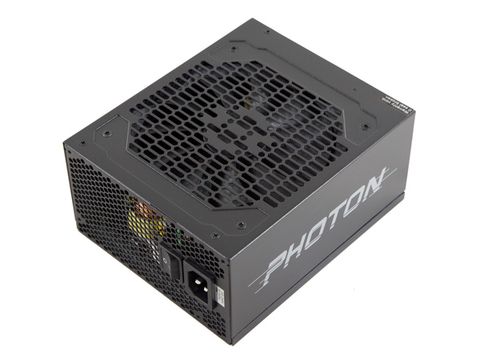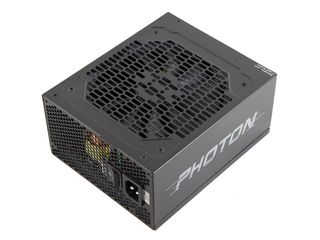Early Verdict
For $170 you get an older platform, which however is equipped with Japanese capacitors and utilizes a fully modular cabling design. The major drawbacks of the Photon-1200 PSU are ripple suppression at high ambient temperatures and the unit's noisy operation, even at normal ambient temperatures. If you care about noise, then you should spend some more and get a quieter and more efficient 1.2kW unit.
Pros
- +
Compact dimensions • Fully modular • Hold-up time • Japanese caps • Price • Warranty
Cons
- -
5VSB spike in turn-on tests • Efficiency • Noise • Ripple • Vampire power
Why you can trust Tom's Hardware
Introduction
Rosewill has a rich power supply portfolio that includes a wide range of families covering every market segment. The company is trying hard to establish a good name in the competitive PSU business, which is a good thing not only for Rosewill but for its customers as well, since competition typically lowers prices. This is especially true in the U.S. market where, currently, two companies dominate the field.
One of Rosewill's newest PSU lines is the Photon series, which consists of six units ranging from 550 to 1200W, covering all of the important categories from low- and mid-wattage to the mega-PSU category. A strong selling point of these models is their affordable prices, resulting mostly from Rosewill's choice of OEM. Sirfa usually manufactures platforms with high price-per-performance ratios. Throughout this review, we will determine if this also applies to the Photon-1200.
All Photon units are fully modular and 80 PLUS Gold-certified. These are two features that, even today, are considered high-end. In addition, the Photon-1200 that we're focusing on is a powerful unit with a single +12V rail, able to feed multiple GPUs without running out of reserves. Admittedly, there aren't many enthusiasts who need a PSU with more than 1kW of output, even for a high-end gaming rig. But if you're trying to use three or four big graphics cards, it may become necessary to buy something bigger than 1000W. This is where 1.2kW PSUs come into play.
Specifications
MORE: How We Test Power SuppliesMORE:
All Power Supply ArticlesMORE:
Power Supplies in the Forums
The Photon-1200 PSU is compatible with the sleep states of Intel's Haswell-based CPUs (C6 and C7), where power consumption on the +12V rail is minimal. According to Rosewill, the maximum temperature at which it can deliver full power continuously is 40 degrees Celsius (104 degrees Fahrenheit), although the ATX spec says 50 °C (122 °F). During our tests, we will go higher than 40 °C inside our hotbox and see how the PSU responds, especially under higher loads. Hopefully it survives, despite the lack of over-temperature protection (OTP), which is particularly essential for PSUs with lower temperature ratings.
A double ball-bearing fan handles the unit's thermal load. And with no semi-passive mode, noise output is noticeable even under light loads. In high-capacity PSUs like this one, passive operation when there's not much going on is a nice feature, especially since most of us don't push our systems constantly. Finally, Rosewill offers a long warranty—five years—on the Photon-1200.
Power Specifications
| Rail | 3.3V | 5V | 12V | 5VSB | -12V | |
|---|---|---|---|---|---|---|
| Max. Power | Amps | 25 | 25 | 100 | 4 | 0.3 |
| Watts | 130 | 1200 | 20 | 3.6 | ||
| Total Max. Power (W) | 1200 |
The single +12V rail can deliver 100A. That's a lot of current, easily able to meet the demands of power-hungry gaming systems. Additionally, the minor rails' maximum combined power is high for a contemporary system that uses them only lightly, while the 5VSB rail is significantly stronger than average.
Cables And Connectors
| Modular Cables | ||
|---|---|---|
| Description | Cable Count | Connector Count (Total) |
| ATX connector 20+4 pin (600mm) | 1 | 1 |
| 4+4 pin EPS12V (705mm) | 2 | 2 |
| 6+2 pin PCIe (600mm) | 4 | 4 |
| 6+2 pin PCIe (600mm + 150mm) | 2 | 4 |
| SATA (460mm+150mm+150mm) / four-pin Molex (+150mm) | 5 | 15 / 5 |
| FDD Adapter (+150mm) | 1 | 1 |
The number of EPS and PCIe connectors is adequate, and the number of SATA and four-pin Molex connectors is high. With 15 SATA connectors, this PSU will easily power a storage server with numerous HDDs/SSDs, and the five peripheral connectors are sufficient for devices like system fans, coolers and LED lights. The cable lengths are good, and the distance between connectors is adequate (although, in some cases, a smaller distance between the SATA connectors could be better). Finally, the 24-pin ATX connector, along with all of the EPS and PCIe connectors, use thicker 16-gauge wire for lower voltage drops at high loads. The rest of the connectors use standard 18AWG wires.
Power Distribution
Because this PSU features a single +12V rail, we do not have anything to say about its power distribution.
Aris Mpitziopoulos is a Contributing Editor at Tom's Hardware US, covering PSUs.
-
MasterMace Sirfa has produced too many poor units in the past to get any leeway or benefit of the doubt. It failed 80 Plus Gold in the hotbox at 100% load.Reply -
boller I have a good perspective on that ripple thing: just finished repairs of a PC power supply and when I was measuring ripple I found it was out of whack (300 mV pp). After some investigation I found out that measuring ripple is a tricky thing. Tom's description on how they do it is very incomplete. Eevblog guy spent an entire episode on ripple. In my case I had to do this: limit oscilloscope bandwidth 20 MHz, instead of the grounding clip use that spring attachment and measure loaded PSU at the last cap before leads. Ripple went down from 300 to 48 mV pp.Reply -
Aris_Mp First of all you don't just hook a scope on a PSU's output and measure ripple else you will catch huge spikes, like in your case, which will totally alter the measured result.Reply
Secondly most users aren't interested on how I do things (and even if I elaborated on all the procedures I follow only a fraction of them would understand them) but about the final result. For me the most important is to explain what ripple is and how it can affect the components of a system.
Thirdly. You don't have to watch Dave to see how ripple is measured properly. You can check on the ATX spec which includes the ripple measurement procedure. I follow all guidelines of the ATX spec so if you need to see how I measure ripple or load regulation just take a look at them. In any case the following scheme will show you how to measure ripple on a PSU.
-
boller No need to be defensive, I was just pointing out that your _description_ is incomplete, not that you do it wrong. Although it would be nice for you to place a note over there saying that actual procedure involves some additional caps and an honest to god differential probe (!)Reply -
Aris_Mp I just replied to your concerns. No need to think that I am defensive because clearly this is not the case with me.Reply
I already stated that I don't mention how I measure ripple since among others all of us reviewers have to follow the ATX spec procedure. There is no point in repeating the whole ATX spec from the moment that anyone can download and read this spec with a simple google search.
Besides these two caps (which are already pre-installed on the fixtures that most of us reviewers have. There also present on loaders like the Sunmoon ones) and the good quality probes you also need to isolate all external noise that can pass from the PSU's EMI filter. In other words you need to provide "clean" power to the PSU. Personally I do this with a Chroma AC source and in the near future I plan to get a online UPS with some extra circuits for EMI/noise protection which will feed the AC source (so I will have two layers of protection). In order to check if your line is clean firstly take some readings on the major rails (+12V, 5V and 3.3V) with the PSU in standby. If you see increased ripple (normally it should be close to zero mV) then your scope picks up noise or the PSU isn't properly isolated from the rest devices on your home/lab. -
CTurbo It's not a bad unit, but it's not competitive at all. It's more expensive than an EVGA G2 1300w Gold and and Rosewill Capstone 1200w Gold, and almost as much as an EVGA P2 1200w. Yikes!Reply -
Mac266 Shame it performed badly, a cheap high rated supply could stir the market up nicely!Reply
It's not a bad unit, but it's not competitive at all. It's more expensive than an EVGA G2 1300w Gold and and Rosewill Capstone 1200w Gold, and almost as much as an EVGA P2 1200w. Yikes!
CTurbo! How ya been mate?


